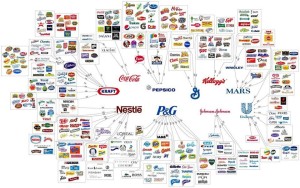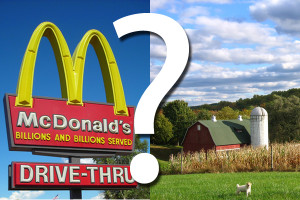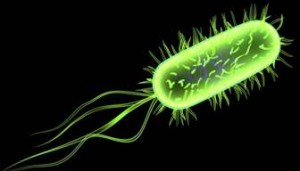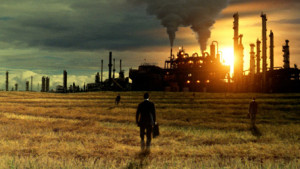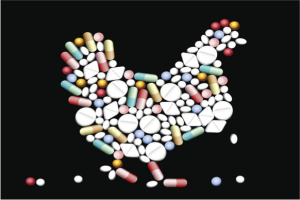Drew Andros
M/W 3:45 PM
1447 words
Unit 1 Blog Article:
Throughout the course of time, food has been an everlasting staple to all species. It is a reason for people to get together and communicate, it’s a reason to celebrate and relax, and it’s a necessity in order for the body to be properly nourished. However, over the past century or so, food has become less of a gathering tool, and less of a reason to get together, and it has simply become a way to make money.
In the centuries prior to this one, home-cooked meals, fresh food, and delicious ingredients were all a staple of the American household. People would invite their friends and family over, cook food, and relish the opportunity to enjoy each others company. However, as stated above, the last 60 or 70 years has brought us a massive change in society that now sees food as only a commodity in order to profit. Of course, with every statement, there are limitations. Food is still used by many people, both in this country, and around the world, to relax and enjoy, however as a whole, there have been a plethora of reasons as to why we are starting to see food as simply a way for large corporations and farmers to make money.
In the documentary Food, Inc., the narrator discussed how the rise of the fast food industry and the “conveyer belt/mass production” system created an atmosphere that changed the landscape of food production forever. At that point, growing food became less and less about growing fresh products that tasted great, and more about growing and using pesticides to mass produce things that could be given to chains like McDonalds, who could then turn around and give these large companies a major profit because of the bulk with which they were buying. When the food market became more about creating money and supplying large amounts of both meat and produce to giant companies, rather than allowing small time farmers to create fresh food that could be better quality, the entire dynamic changed.
Now, we live in a society much different than the one half a century ago. While it seems that our food is relatively easy to purchase as a consumer, we are blissfully unaware of the difficulties and struggles that go into processing our food, as well as the harsh conditions that many farmers must go through in order to take care of their families. Although, as I stated above, we live in a society that puts a greater emphasis on quantity than quality, there are still farmers out there that are trying to stay with old traditions and create good quality food; however, those farmers will most likely either be eaten up by the large companies, or unable to compete with them because of the price difference. Also in the Food, Inc. documentary was a very depressing narrative that showed small farmers having to cooperate and create farming environments that they weren’t morally comfortable with, because of how it affected the animals. However, if they were not to oblige and go against the companies for whom they worked, they would lose massive amounts of money that would disallow them to provide for their families.
One of the main issues we face today in the food industry is safety of the food that we are growing and consuming. We have had a handful of foodborne illnesses over the course of the last 30 years, however, people, in general, don’t seem to be very concerned about the fact that they may be eating tarnished food. They simply expect the government to look out for them and “vet” the food before it arrives in their refrigerator, however in many instances, that is just not the case. The government may not be impartial, first of all, and may have some of the large food corporations in their back pocket, but even more terrifying than that is the peoples’ unawareness to the potential problems that foodborne illnesses can create. According to Marian Nestle, food is a very difficult illness to pinpoint, and as a result, foodborne illnesses are not tracked very well. She states that “Attributing a bout of diarrhea to food rather than other causes is no simple matter. Most of us eat several foods at a time, several times a day, in several different places. How could we possibly know which food might get us sick, especially if there is a delay in the onset of symptoms. I can not imagine bothering to call a doctor about a brief stomach upset” (Nestle 37). This quote perfectly illustrates the difficulty with creating a society where we can honestly track the health and safety of food, beyond what the government already has implemented as safety standards, such as the USDA, the FDA, the CDC, amongst other organizations. Nestle is a professor of sociology and food studies at New York University, and she gave us a perfect anecdote to sum up America’s ignorance to the harsh realities of foodborne illnesses. She says in her article “The Politics of Foodborne Illness” that she and her family were at a dinner party in the 1970’s, and many people got sick afterwards. Now, instead of going to the doctor and making sure that they were truly okay, or calling the company that supplied the foods they ate and asking them if there had been any other reported outbreaks of illness, the people simply took Advil, Tylenol, and within a few days there were back to normal. Now, while it is definitely a positive that nobody got seriously hurt, or worse, died, it speaks to how uninformed and unaware these people were to the serious dangers of food. Now, that was 40 some years ago, however the true message really hasn’t changed. People simply expect the government to have their best interest in mind and to monitor everything that they are putting into their mouths, and that simply isn’t the case time and time again. Thus, Nestle argues that there needs to be more government intervention, as well as more self-teaching when it comes to people and their food.
As discussed above, consumer awareness is a major part of creating a society with good food that is both tasty, and safe. While it should be the job of the government to make sure that people are eating safe food, we also need to encourage a society of people who understand the nuances of the food industry and how to spot food that is both safe and unsafe.
Whether or not organic food is better for someone is a very big debate in this country at this point in time. On one hand, companies like Chipotle thrive off of organic food and use it as a selling point. However, there are people, like Blake Hurst, who feel like eating organic is simply a way to drive up prices on food, and it allows farmers who do grow organic to charge their prices at a higher rate in order to increase profits. In addition, he argues that studies have shown that organic foods can actually present a greater health risk to society than genetically modified foods. He states in his article “The Stanford study found that organic foods were considerably less likely than conventional foods to have pesticide residues, although organic foods were higher in e. coli. Pesticide exposure is hard to understand and scary, but pesticides on food are typically found at levels thousands of times lower than harmful levels. E. coli, which comes from fecal matter, just kills people” (Hurst Pesticides and Policies). E. Coli is extremely dangerous, and as a result, this Stanford Study does bring up legitimate questions about whether or not eating organic is truly better for one’s health.
All in all, the food debate has completely shifted over the course of the last generation or two. While small time farming that focused on freshness, the best ingredients, and moderate prices was the narrative in the food industry 60 or 70 years ago, large corporations and mass-producing has taken over. As a result, farmers are going out of business and the market is being taken over by a handful of large companies. In addition, people are generally unaware about what they are putting into their mouths and are completely oblivious to whether or not they are being served safe of unsafe food. In order to ensure the safety of the American people, and to also keep the government and food growers responsible for what they serve us, it is our duty to become more knowledgeable about food, and to also become cognizant of the changes in the food industry that could very well affect our health.
Works Cited:
https://www.aei.org/publication/organic-illusions/
http://cen.acs.org/articles/90/i8/Keeping-Food-Safe.html
Food Inc.
Reflection Questions:
- For me, the writer’s project refers to the message that the writer was trying to get across to the reader. It focuses on the key points that they were hoping would come through in their article. I was able to identify the specific project used by the different writers by simply reading the text, annotating it, and then looking for main theses and points. In this article, my own project looked at multiple things, including the naivety of people when it comes to the food they eat, the argument surrounding organic vs. non-organic, and also government intervention into our food.
- The entire Sorting it Out worksheet I found to be incredibly beneficial when completing my blog article, however I would have to say that finding the key terms of each article was especially beneficial because it allowed me to find similarities within the articles, as well as give me an understanding of the main points of the article.
- To me, synthesis revolves around understanding the cohesion with which this essay was put together. There needed to be a flow to it, as well as making sure that my points were properly sorted out and put on paper so that the reader could understand where I was coming from.
- During this unit, I accomplished becoming more aware of food safety, and the general food industry. I was completely unaware, to be honest, of the industry before this class and so I do feel like learning about it is an accomplishment in itself.
- My main idea simply started as a belief that people were unaware of the food that they were putting into their mouths, and it evolved into something much larger. At the end, it was evident that I discussed multiple facets of the food industry, including food safety, government intervention, organic vs. non-organic.
- Throughout the course of the essay, I tried to divide the article up into main points. Whenever a main point shifted gears into something else, I made sure to start a new paragraph. In addition, it has been shown that people can only focus on small bits of information at once, so dividing something up into a bunch of little paragraphs allows for people to be more willing to read it, rather than to simply keep it in a big block of text.
- “As a result, farmers are going out of business and the market is being taken over by a handful of large companies. In addition, people are generally unaware about what they are putting into their mouths and are completely oblivious to whether or not they are being served safe of unsafe food. In order to ensure the safety of the American people, and to also keep the government and food growers responsible for what they serve us…” In this little excerpt, I discussed the food market changing to support big business instead of small time farming, as well as food safety, and lastly, government intervention into our food.
- In the beginning, my lede was very long and drawn out, and as told by our professor, as well as the person I worked with one on one, I had to shorten it. as a result, I made sure to make it concise and bring in something that was attention grabbing and would be interesting for the reader.
- I would like to work on transition statements throughout the course of the next couple unit projects. I felt like they were good in this specific blog article, but that there is definitely room to improve. Smooth transitions are imperative to an essay’s success, so I want to make sure that I do well with them.


